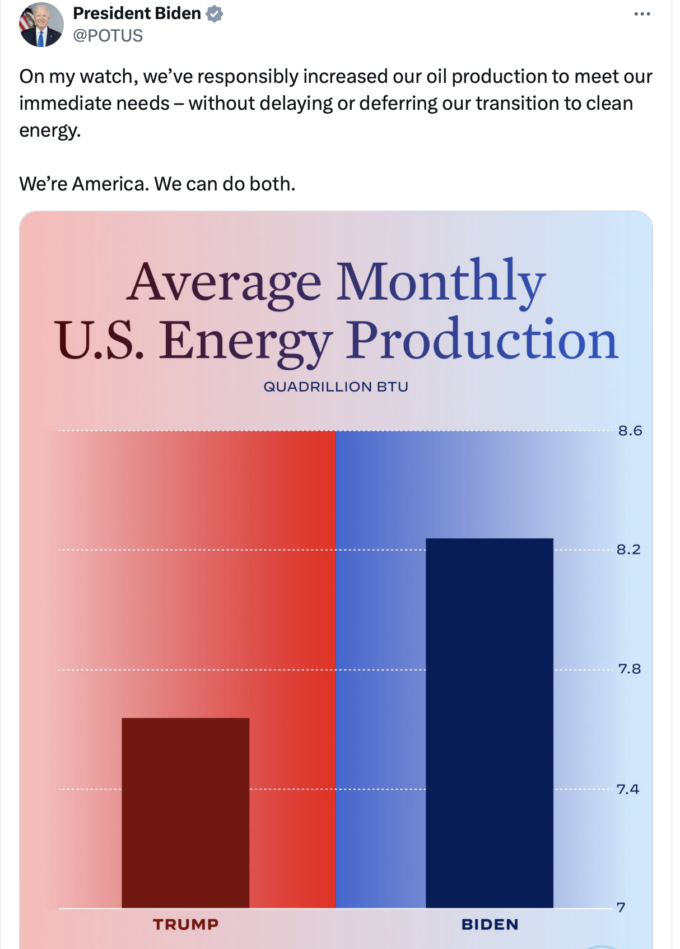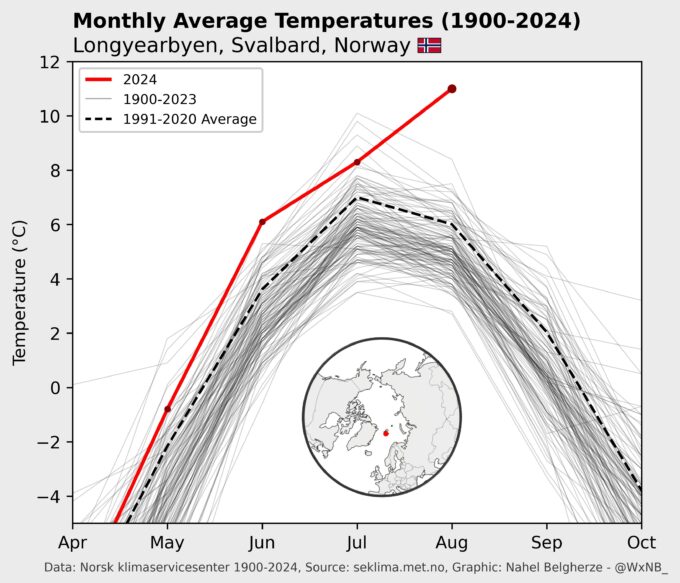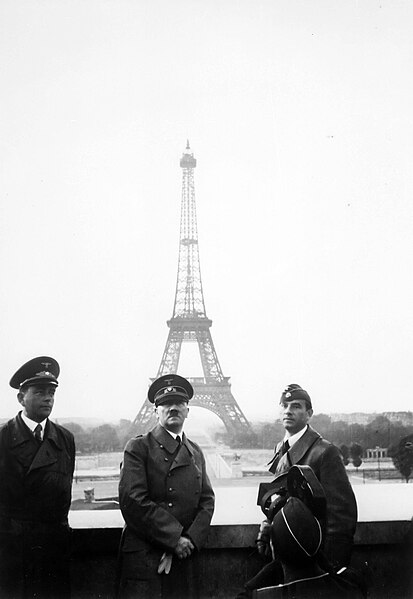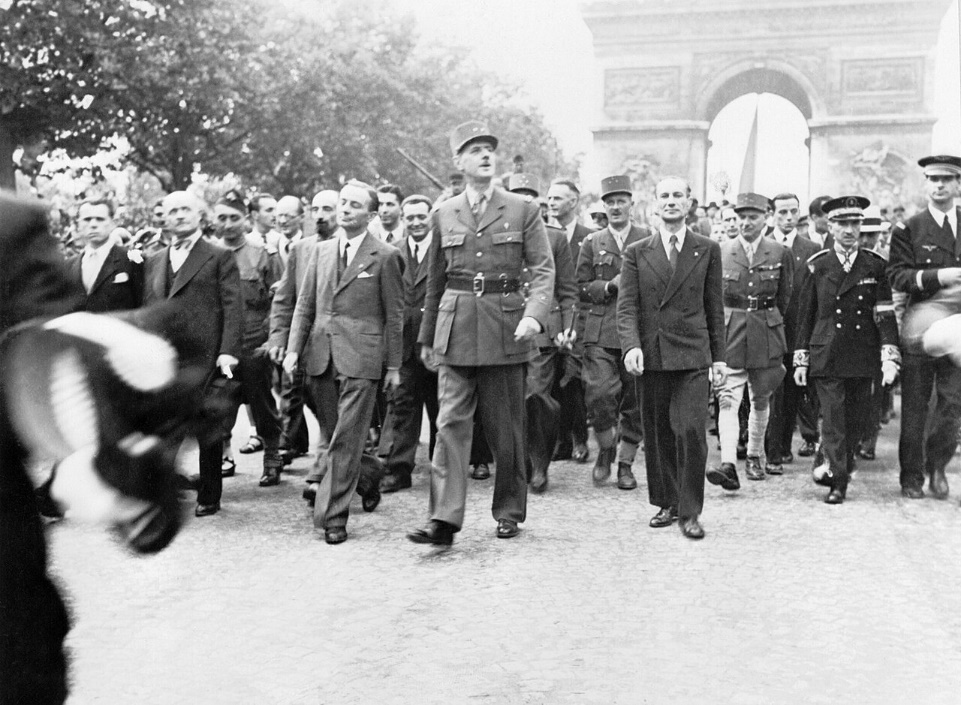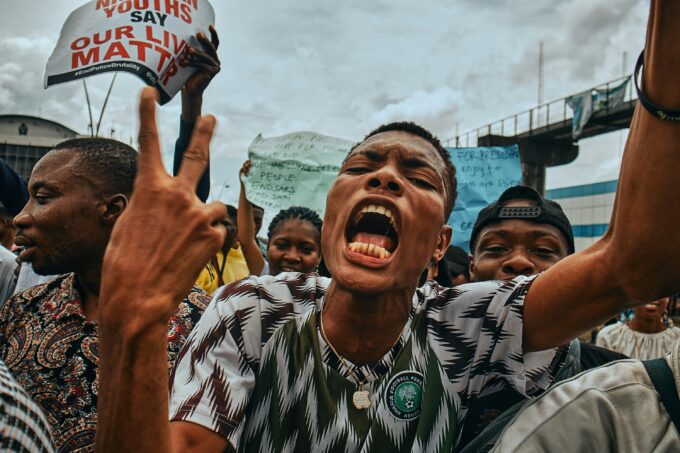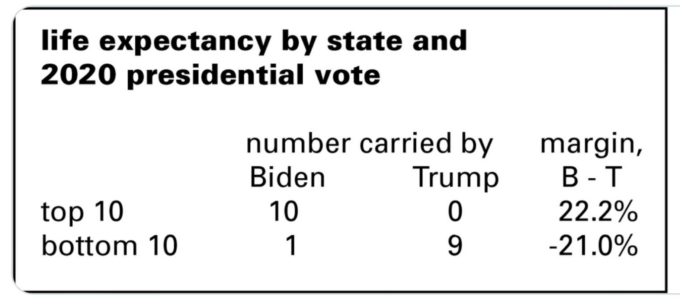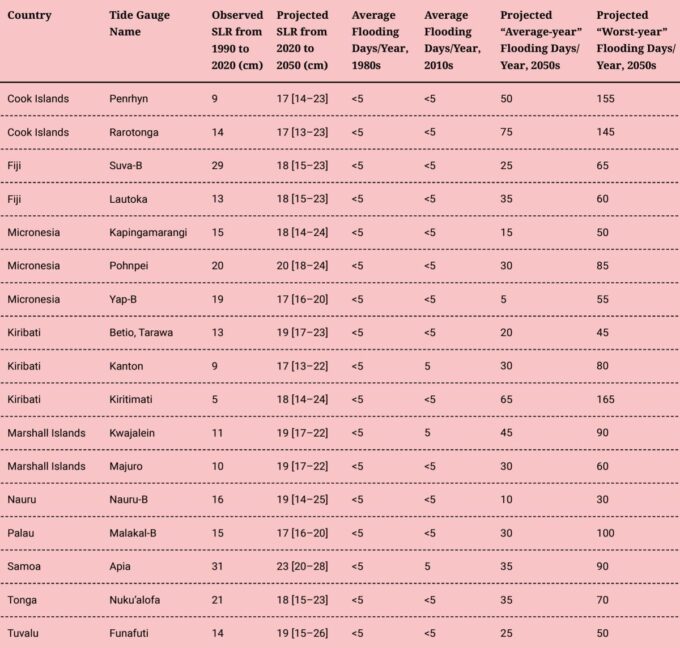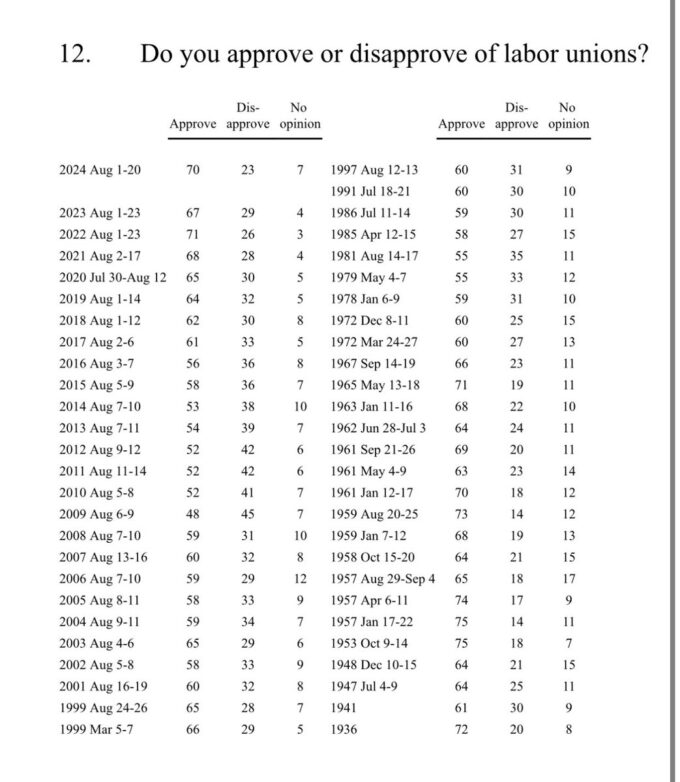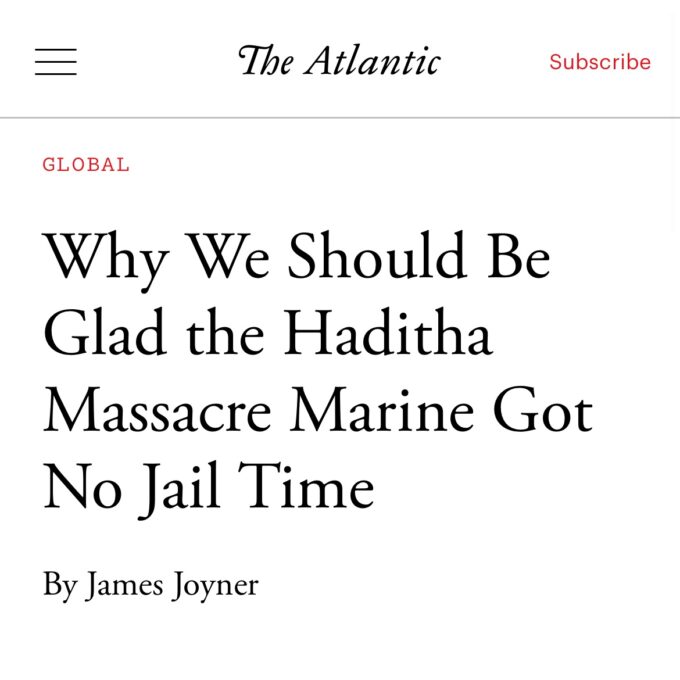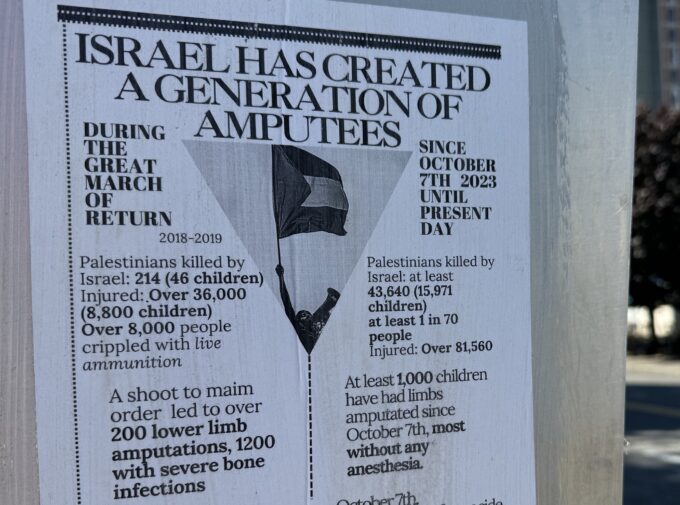

Aug. 21, 2024, day three of the DNC, thousands of protesters from Chicago’s “Little Palestine” marched in support of Gaza and called on Kamala Harris to endorse an arms embargo on Israel and a permanent ceasefire. Sheri Maali, center, with friends, said “Holding out our votes” could force Harris to agree to the movement’s demands. Credit: Arun Gupta
It’s not that the Democrats did not show any concern about Palestinians at the Democratic National Convention. They showed extraordinary concern given the lengths they went to erase them from Kamala’s coronation.
Afterwards the Democrats seemed ecstatic that a little genocide didn’t disrupt their joy. But there were still plenty of protests and signs of divisions that could pose problems with Harris’s path to election especially as student protesters look to reinvigorate the movement.
One high-profile protest took place inside the convention center on the first night as Joe Biden spoke. Delegates unfurled a banner reading, “Stop Arming Israel.” Nadia Ahmad, a Florida delegate for Harris, held up the banner along with a Jewish superdelegate. Ahmad says other delegates hit her “We Love Joe” signs. It revealed how liberals are more enraged at those opposing genocide than those committing genocide.
During the DNC there were countless press conferences, vigils, street theater, and small protests in support of Gaza. There were plenty of cranks, conspiracists, and insurrectionists too. One wiry middle-aged Californian who drove a van across country outfitted with lightboards sat next to the park where protests were held and screamed “Nazis,” “Zionists,” and crude sexual slurs against Harris over his sound system. In 30 seconds of conversation he claimed “Jews control the government” and in another 15 seconds he veered into JFK conspiracy theories.
The second night, “Behind Enemy Lines” organized a Judean People’s Front Suicide Squad-style mob to bring the fight to the Israeli consulate under the slogan “Make it great like 1968.” They were swept aside by cops outnumbering them ten to one.
On three separate days, lively pro-Palestine marches drawing up to 3,000 people stepped off from Union Park, a half mile from the DNC. They called for an arms embargo on Israel and a permanent ceasefire. While protesters were defiant, the marches should have attracted ten times as many people given the popular outrage and gravity of the situation.
At one exit from the convention center, protesters read names and ages of children murdered by Israel. One reporter said delegates chanted “USA!” at them. In a video, DNC attendees can be seen covering their ears as protesters read the names of children. One attendee shrieked in mockery, “18-years-old!”
No Palestinians Allowed
On the third day, two dozen delegates and supporters of a ceasefire staged a sit-in outside the VIP gate and inside the convention fencing. Protesters demanded that the DNC allow a Palestinian to take the stage to speak on Gaza. The Democrats refused.
The Washington Post claimed the DNC made concessions to Palestinians. Ha’aretz said, “The DNC slams the door on Gaza advocates.” (The Israeli press is typically more unbiased about the U.S. relationship with Palestine and Israel.)
The Democrats are mad that Palestinians dare protest their extermination. A supporter with the Uncommitted National Movement told me a long list of Palestinian speakers was presented to the DNC. All of them were rejected.
One rejected speaker was Ahmed Fouad Alkhatib. He is with the Atlantic Council, a pro-Zionist think tank. Alkhatib says he is “anti-Hamas.” He said:
“There were several attempts to get me on the DNC stage to speak and share a message of healing and unity – all were unsuccessful. I even offered to bring a hostage family and talk together about ending the war in Gaza, releasing the hostages, and confronting hate and extremism.”
Sit with that for a minute. A pro-Zionist, anti-Hamas Palestinian who offered to take the stage with a hostage family wasn’t good enough for the DNC.
Consider a second rejected speaker, Georgia State Rep. Ruwa Romman. Mother Jones called her “a safe last resort.” Romman said, “If an elected official in a swing state who is Palestinian cannot make it on that stage nobody else can.” She added that her speech was “frankly, very sanitized.”
Watch her speech. It is very short and mild. It is Midwestern grandma at Taco Bell mild.
What does it say that Palestinians who are deferential to Israel, a state and society seething with genocide, are still not good enough to speak at the DNC?
Harris is simply bowing to the diktats of the Democrats’ true constituency: billionaires and national-security interests. They tend to unconditionally back Israel, the most important U.S. client state. (For a primer on how Israel has been central to American global power, read Chomsky.)
The Power Broker
Take Haim Saban, one of the most prominent Democratic megadonors. He has said, “I’m a one-issue guy, and my issue is Israel.” Saban drops staggering sums on politics. He gave $16 million to Hillary Clinton’s 2016 campaign, $7 million for a new DNC building, more to liberal think tanks, organizes fundraisers that raise millions, and “as much as $30 million to the Clinton Foundation when Hillary was secretary of State,” according to Mondoweiss.
Unsurprisingly, Saban throws his weight around and is an extremist on his one issue. When Biden paused a shipment of 3,500 U.S. bombs in April slated to kill Palestinian civilians, Saban harangued senior White House officials, “Bad, Bad, Bad, decision, on all levels, Pls reconsider.”
Saban also told the White House, “Let’s not forget that there are more Jewish voters, who care about Israel, than Muslim voters that care about Hamas.”
Let that sink in. Israel claims it is fighting Hamas. However, Israel equates all Palestinians with Hamas, meaning they are all targets. That logic animates Israel’s genocide of Gaza, which “is quite explicit, open, and unashamed,” as Jewish Currents states.
Saban is doing the same thing. He is equating millions of Americans with Hamas. To Saban and his cohort, all Arabs equal Muslims, all Muslims equal Hamas, therefore any Palestinian who speaks at the DNC is Hamas.
Why else would Kamala — the party’s decider — reject Ruwa Romman’s milquetoast speech or one by a pro-Zionist, anti-Hamas Palestinian?
From an electoral standpoint it makes no sense. Having a Palestinian speak would have placated the Uncommitted movement, the bulk of voters willing to withhold votes until Harris endorses an arms embargo and permanent ceasefire. The issue is wildly popular among Democrats, more popular overall than abortion rights. Eighty-three percent support a permanent ceasefire and only 9 percent oppose it.
Instead, Harris is risking losing hundreds of thousands of votes in a must-win state like Michigan as she sees that as less important than losing support from Saban.
Saban’s influence outweighs millions of voters. In a 2010 profile in The New Yorker, Saban comes across as a dishonest manipulative power broker who is courted by U.S. presidents and Israeli prime ministers. Last September, Mondoweiss wrote, “Biden’s policy is now being scripted by Haim Saban, whose money he needs for the 2024 campaign.”
While that probably gives Saban too much power, he is part of a group of oligarchs working feverishly to crush any opposition to unconditional U.S. support for Israel.
Biden’s “Victory Fund” tilted toward Jewish megadonors from Hollywood, Silicon Valley and Wall Street, as Ha’aretz put it. Of the fund’s top 25 donors, nine who gave nearly a million dollars or more (some accompanied by matching donations from spouses) were pro-Zionist. Now that Harris is having her moment in the sun, pro-Israel megadonors have flocked to her blossoming campaign.
Dollars for Genocide
It must be emphasized that Biden and U.S. officials protect Israel not because of money but because it is vital to maintaining American Empire regionally and globally. Benjamin Netanyahu is unabashed about Israel’s role, calling it a “mighty aircraft carrier” for the United States.
Neither are the many pro-Israel billionaires successful in shaping U.S. policy because they are Jewish. They are successful because Israel serves U.S. power.
But we should not ignore the reality that moguls like Saban also support Jewish supremacism and the genocide. Days after Oct. 7, real-estate mogul Barry Sternlicht hit up Jewish billionaires for million-dollar donations for a media campaign. He wrote, “Palestinian suffering will surely erode [Israel’s] current empathy in the world community … We must get ahead of the narrative,” according to Semafor.
Sternlicht claimed scenes of “civilian Palestinian suffering” may have been “fabricated by Hamas,” Semafor said. He aimed to raise $50 million and a matching donation from “a large Jewish charity” for a media blitz to “define Hamas” as “not just the enemy of Israel but of the United States.”
Sternlicht enlisted media moguls Michael Bloomberg, David Geffen, CNN owner David Zaslav, and talent agent Ari Emanuel, investors Bill Ackman, Marc Rowan, Michael Milken and Nelson Peltz, and tech leaders Eric Schmidt and Michael Dell — who combined have half-a-trillion dollars in wealth.
Their wealth, however, could not sway a world horrified by Israel’s atrocities in Gaza that’s been livestreamed for nearly a year. But the super-rich have other levers of power other than money, and they put it to work against student protesters.
Pro-Israel billionaires scheme like cartoon villains in the Legion of Doom. During student protests this spring against the genocide, “billionaires and business titans [were] working to shape U.S. public opinion of the war in Gaza,” The Washington Post reported. The newspaper obtained thousands of verified messages from a WhatsApp chat group where the billionaires coordinated actions.
They lent their cash-engorged muscle to the “Israeli government, the U.S. business world and elite universities” to “help win the war” of public opinion, said the Post.
Plutocrats were particularly incensed by the peaceful student protests at Columbia University. They bullied university administrators and trustees to let NYC Mayor Eric Adams send in a notoriously violent police unit so students could be “dragged off campus,” and they bragged of funding private snoops to work with NYPD intel to disrupt student protests.
The masters of the universe were not above getting in the trenches to slug it out. They amplified Zionist social media provocateurs, promoted propaganda films, organized “anti-Hamas” social media campaigns, coordinated with the Israeli government to influence media, and shopped around for Black celebrities to enlist in their crusade like “Jay-Z, LeBron James or Alicia Keys.”
Zionist influence-seeking has become more brazen with the genocide. AIPAC unleashed a $100 million war chest that torpedoed two members of “The Squad,” Rep. Jamaal Bowman and Rep. Cori Bush. In June, some Democrats voted for a bill that amounts to genocide revisionism out of fear that groups like AIPAC would “Jamaal” them. (The bill prevents the State Department from using casualty figures from Gaza’s Health Ministry. The statistics are widely considered accurate but they now may be a vast undercount with Israel’s destruction of the health infrastructure.)
We Have the Power
Given the power of pro-Israel forces, liberals claim Harris is doing what she needs to get elected. This is lazy thinking. Neither AIPAC or Israel is invincible. AIPAC did not make a serious attempt to dislodge the two House members most outspoken about the genocide, Rep. Ilhan Omar and Rep. Rashida Tlaib. It dropped a $4.5 million bomb in a California primary to defeat State Sen. Dave Min, who is running to succeed progressive champion Rep. Katie Porter, but that turned out to be a dud as Min won.
As far as Israel goes, it is “already becoming an international pariah,” says Ha’aretz, and its economy has tanked. Nearly 10 percent of the population is out of action with 120,000 Israelis displaced internally, and up to 470,000 others who have bailed since Oct. 7 or never returned from summer vacation overseas because of the war.
Israel is on the ropes, and Democrats are in denial. Its platform reads like AIPAC wrote it. In her DNC speech, Harris spoke of “dignity, security, freedom and self-determination” for Palestinians but couldn’t say ceasefire, occupation, or settlements. Harris, however, felt no qualms about dog whistling for genocide — endorsing “Israel’s right to defend itself” — and promoting the Oct. 7 rape hoax.
“I will always stand up for Israel’s right to defend itself, and I will always ensure Israel has the ability to defend itself, because the people of Israel must never again face the horror that a terrorist organization called Hamas caused on Oct. 7, including unspeakable sexual violence and the massacre of young people at a music festival.”
Compare what Harris said to what George W. Bush said in 2002. His words were far bolder, if as meaningless as Harris’s.
“Permanent occupation threatens Israel’s identity and democracy. A stable, peaceful Palestinian state is necessary to achieve the security that Israel longs for. So I challenge Israel to take concrete steps to support the emergence of a viable, credible Palestinian state. … Israeli settlement activity in the occupied territories must stop.”
Harris is an extremist not just on Gaza. She has vowed, “I will ensure America always has the strongest, most lethal fighting force in the world. She says she will be tougher on the border than Trump, meaning more violent and racist, she wants to keep building Trump’s border wall, and she supports fracking.
Migration, imperialism, genocide, and climate change are the top issues facing humanity. On each issue, Harris will be as bad if not worse than Trump. (Trump may want to “Drill, Baby, Drill!” but one pro-Trump oil billionaire says the oil and gas industry is already “producing everything we can” under Biden and Harris.)
The decision by Harris and her campaign to erase Palestinians is a choice. They are choosing to stand with the plutocrats and against the people. Harris could choose to run a Bernie Sanders-style campaign and call for an arms embargo. He showed that a campaign based on peace and prosperity could do as well or better than one based on guns and crumbs.
Harris, however, is a product of a system ruled by Wall Street and the war machine. She is another cynical opportunist, albeit with better memes and branding.
Harris is explicit that Israel’s genocide of Gaza will continue under her. But for now we have power over her: The power to withhold our votes. That’s what she fears, and we need to make our threat credible that her only path to election is by ending the genocide.
We need to proclaim loudly, “No arms embargo, no vote.” The more of us who refuse to vote for Killer Kamala, the more likely it is that Harris will realize sticking with the ruling class is a losing proposition.
The post Why is Kamala Harris Erasing Palestinians? appeared first on CounterPunch.org.
This post was originally published on CounterPunch.org.












